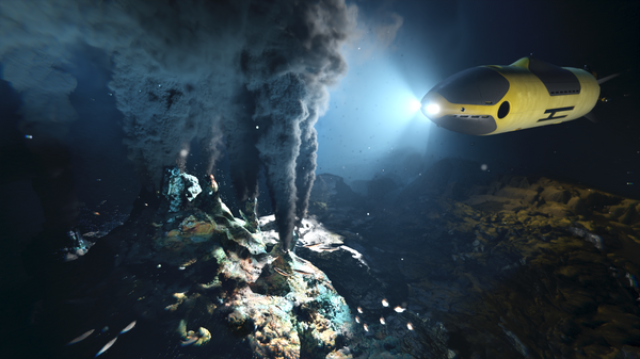The Argus drone for the protection of underwater pipelines will be shown for the first time at Army-2023
MOSCOW, Aug 14 - RIA Novosti. Russia has developed the latest Argus marine drone to protect infrastructure and locate dangerous objects near underwater pipelines, the press service of the Central Design Bureau of MT Rubin told RIA Novosti on Monday.
The autonomous uninhabited underwater vehicle (ANPA) "Argus" will be presented for the first time at the international military-technical forum "Army-2023", which will be held on August 14-20 in the Patriot Park near Moscow.
Argus guards the underwater infrastructure: it will find a foreign object next to the pipeline, recognize a source of danger in it and transmit information about it to the support vessel," the representative of Rubin said.
According to him, in general, Argus is designed for a wide range of tasks in the search and development of an underwater field. He conducts underwater exploration of minerals, collects information about the structure of the bottom and the state of the aquatic environment. Argus will quickly and accurately find a suitable site for laying the pipeline. After the pipeline is laid, Argus will monitor its technical condition: it will detect an oil or gas leak, determine the place of insulation damage, the place of soil flushing under the pipeline or the displacement of the pipe.
The 3.2-ton robot has a length of 5.6 meters and a body diameter of 1 meter. The power source is a lithium-ion battery. Removable sections ensure multitasking of the device. When submerged, Argus maintains coded communication with the supporting surface vessel, other underwater drones participating in the underwater operation, and bottom communication nodes. In the above-water position, it can use VHF radio equipment, satellite communications, Wi-Fi system.
The depth of the Argus dive is up to 6 kilometers, and it is also possible to perform it in modifications with a depth of immersion per kilometer and three kilometers, depending on the customer's needs. Moving at a route speed of up to three knots, Argus operates autonomously for up to 24 hours. If necessary, it develops a full underwater speed of up to 8 knots. A specially designed descent device will allow you to take the Argus on board and send it on a mission with excitement up to four points. The device can transport various sensors, including seismic sensors, as well as samplers to a given area.
The explosions occurred on September 26, 2022, on two Russian export gas pipelines to Europe - Nord Stream and Nord Stream 2. Germany, Denmark and Sweden have not ruled out targeted sabotage, Russia considers these explosions terrorist attacks. According to Nord Stream AG, the operator of Nord Stream, the destruction of gas pipelines is unprecedented and it is impossible to estimate the repair time.
On February 8, American journalist, Pulitzer Prize winner Seymour Hersh published his investigation, in which, citing a source, he stated that explosive devices under Russian gas pipelines were laid in June 2022 under the cover of the Baltops exercises by US Navy divers with the support of Norwegian specialists. According to Hersh, the decision on the operation was made by US President Joe Biden following nine months of discussions with administration officials dealing with national security issues. Later, the Pentagon told RIA Novosti that the United States had nothing to do with the undermining of Russian gas pipelines.

